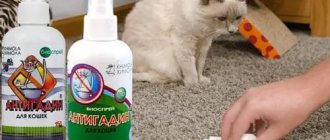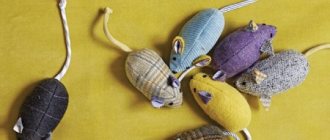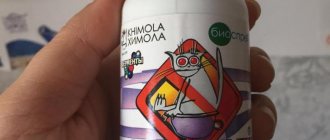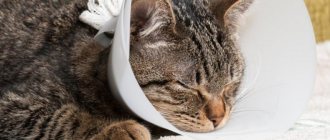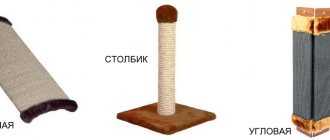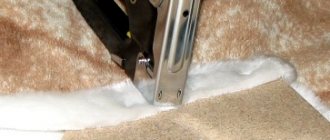What can cats do?
Before we figure out how to prepare a cat’s lunch, let’s find out which foods are considered acceptable and healthy for her. The cat will be healthy and cheerful if you feed it tasty and varied. For these pets, raw lean meat is suitable, such as lamb or beef, chicken, and lean ocean fish. It is also recommended to give boiled yolks or raw eggs and fermented milk products no more than twice a week.
It is strictly forbidden to feed cats chocolate, alcohol, avocados, nuts, grapes, yeast dough, onions, garlic and salt. These products are not only not required by the cat's body, but can also be harmful to it.
Requirements for natural food
Dishes prepared by the owners of their furry beauties themselves will be healthy and suitable for pets if certain rules are followed. You need to understand that a careless attitude to the issue of feeding can cause harm, lead to illness, and the death of a family friend. It is necessary to observe the nutritional standards that a given individual is capable of eating in nature. It is important to adhere to the following requirements:
- the cat’s daily diet should contain a sufficient amount of animal components, Omega 3 and 6 fatty amino acids;
- Home-cooked food must be complete, balanced, taking into account the physiological natural needs, age, characteristics of the breed, activity, sensitivity of the digestive organs, health status, gender, providing the animal with the necessary amount of energy. All this requires some experience and analysis. It is worth developing a natural menu under the guidance of a veterinarian to carefully calculate the nutrients the cat needs and obtain all the necessary elements in the diet;
- It is necessary to weigh products and strictly record the volume of food. The pet itself does not know how much food it needs. The result of this approach is often obesity, digestive, cardiac, and respiratory problems. The danger comes from both excess and deficiency of nutrients;
- cat food must contain the necessary microelements (necessarily phosphorus, calcium), including vitamins;
- The portion of food must be completely eaten.
Nutritional needs of cats
In nature, cats lead a predatory lifestyle, feeding on birds and small rodents. Their jaws are capable of tearing off and gnawing off pieces of meat, but they swallow them completely, entirely, because... do not have chewing teeth. Animals can eat food in pieces, eat chopped food, dishes in the form of pates, and porridges.
Carbohydrate products are not recommended for the cat family, like all other predatory animals, as they are not broken down in the stomach and are harmful. The preferences of humans and cats are different, although pets can happily enjoy their owner’s favorite dish. There are capricious individuals who are content with a certain type of food and are indifferent to the rest.
Cats need food high in fat and protein, which they need twice as much as dogs. The pet's diet is carefully planned taking into account the feeding received. The nutrition formula for a cat is simple: half of the diet should be protein (meat), 1/4 fiber should be vegetables, 1/4 carbohydrates should be cereals.
Features of permitted natural food:
- The main portion of the diet (more than 85%) should be meat: lean chicken, beef, rabbit, approximately 8% of body weight - up to 6 months of age, after a year - approximately 4%. Chicken requires careful introduction into the diet, as it has recently caused severe allergic reactions. The meat is given scalded with boiling water or boiled with the addition of vegetables and a few drops of vegetable oil. Pork is strictly prohibited;
- fish: sea fish, low-fat varieties - once a week, in order to avoid urolithiasis, instead of raw meat, uncut or only boiled (hake, pollock, blue whiting, tuna) to prevent severe anemia, without bones. Mackerel, haddock, flounder, salmon, and cod are allowed. Freshwater fish must be boiled to eliminate problems associated with helminths infesting cats and to destroy the harmful enzyme thiaminase. It is not permissible to feed castrated cats and sterilized females with fish products;
- fermented milk products: kefir, cottage cheese, medium fat content, less than 5%. Milk cannot be added to the menu. Lactose is poorly absorbed by adult cats due to the lack of the enzyme lactase, but pets who tolerate the product can be given boiled as a source of calcium into the body. Cheese, cream, sour cream are heavy products for the pancreas;
- offal: liver (in its raw form it relaxes the intestines, in boiled form it has a binding effect), kidneys, lungs, heart (contains a lot of taurine necessary for cats) - served raw a couple of times a week. Not all cats are able to digest them. Loose stools and vomiting are a reason to refuse this food;
- eggs - quail and chicken eggs are allowed, as an independent dish and when added to fermented milk products. Contains a lot of biotin, which strengthens the coat;
- vegetables - almost everything is allowed, except potatoes, cabbage, beets, fruits - except citrus fruits, bananas. You can combine several types or settle on one product that your animal prefers. They are given raw, crushed, as a separate dish or mixed with meat. Not digestible, needed for good digestion;
- cereals and bran are useful for peristalsis and help maintain beneficial intestinal microflora. You can give porridge: rice, buckwheat, rolled oats;
- oils: olive, pumpkin, flaxseed - envelop the mucous membrane of the digestive organs, normalize their functioning;
- greens collected far from the city limits, sprouted rice or oats are given periodically.
Why is it better to cook for cats yourself?
Making your own cat food is not difficult at all. After all, although industrially produced food makes our lives much easier, they often contain ingredients that cannot be included in the diet of our pets. That is why every year there are more and more people who prefer a natural diet prepared in the home kitchen to commercially produced food.
Food specially prepared for a cat from healthy and fresh ingredients does not necessarily have to be the basis of his diet. You may be feeding him store-bought food more often, but it’s still worth making a healthy and enjoyable addition to your pet’s diet. And if you have enough free time, then the cat can be completely switched to food that you prepare yourself. It will be more natural than any food you can find in a pet store. But remember that you cannot simply feed your cat the same food that you yourself eat for dinner; these pets have dietary habits that must be observed. Therefore, you will have to cook for them separately.
How often should I feed?
Natural food for a domestic cat must also be correct. Therefore, you need to give food several times a day:
- A kitten up to three months of age must be given food six times a day.
- From three to four months, five times a day.
- From four to five months four times.
- From five months to six months three times.
Feeding your domestic cat natural food should be done several times a day. It is not recommended to give food once. When feeding, try to follow the schedule. Give food at the same time every day. It is better to feed an animal with natural food than to give it canned food or dry food.
Before feeding, the food can be slightly warmed and given to the cat in a place where it will not be disturbed. If there are several cats, give them food in different bowls. But cats and dogs should be fed in separate rooms.
“You need to give your cat food even if she constantly catches and eats mice.”
After a meal, the cat needs a good sleep, so you should not disturb it.
The main thing is protein
If you are wondering how to prepare food for your cat, then first of all focus on recipes that are rich in protein. There are quite a lot of them, including some simple ones that won’t take up much of your time, but will allow you to provide your pet with a healthy and balanced diet.
Of course, we should not forget that cats are very picky eaters. Therefore, you cannot guarantee that they will like your cooking; some types of food may not be to their taste. Remember, it is very important for cats that the dish smells delicious. You should never forget about this when deciding what to cook for your cat at home.
Do you need a diet?
Feeding a cat natural food is better than various preservatives, however, with a balanced diet, it is necessary to take into account the general condition of the animal’s body. For example:
- If a cat is expecting offspring, it needs to be fed more often and the portions should be larger.
- If the cat is purebred and is an excellent producer, then his diet should contain a lot of proteins and vitamin E.
- An older animal should be fed light, quickly digestible food. Portions should be small.
- If the cat is neutered, it is necessary to monitor his weight so that later he does not have to go to the veterinarian for help, as he is prone to obesity.
- But a sick animal requires special care, so it is better to consult a specialist about nutrition.
Recipe Features
In recipes for domestic cats, try to use a variety of meats; the more varieties, the better. It can be turkey, chicken, rabbit, beef, duck. This way you will be able to maximize the balance of nutrients, enriching the feeding with all sorts of different textures and tastes. It is best to use different sources of meat at the same time; cats will especially like this.
Can bones be used in cat food? The clear answer to this question is no. You should try to avoid them at all costs for fear of suffocation, blockage of the digestive tract or puncture, since cats' teeth are not as powerful as dogs' teeth to grind bones without endangering their health. Although cats themselves, as a rule, are not averse to gnawing on bones, fishing out all the pieces of meat that remain.
Healthy foods for cats
It is very useful to add the hearts of different animals to your cat's diet. After all, this is one of the main sources of taurine, which serves as an essential amino acid for this animal. If about ten percent of your pet's diet consists of hearts, for example chicken, then dietary supplements in the form of taurine are not needed, otherwise you cannot do without them.
It is also recommended to include the liver, spleen, and kidneys in the cat’s menu, which will also be very useful. True, most animals do not like the taste, but they can be disguised by mixing them with vegetables and meat, after chopping them. For vegetables, give preference to spinach, pumpkin, and carrots. Remember that garlic and onions are toxic to cats and should not be given to them.
What do you need to prepare cat food?
To prepare a cat's dinner, you don't need any special equipment. In the kitchen you will need to have a food processor, blender, and meat grinder, because most products will have to be chopped. There is a basic formula for a cat's diet - half protein (mostly found in meat) and a quarter each of vegetables (they contain fiber) and carbohydrates (these are grains). A large amount of protein is found in chicken, turkey, rabbit and fish. The most optimal source of carbohydrates for animals is brown rice, and for vegetables you will have to rely on what your pet agrees to eat. In your diet, use both boiled and raw meat, mixing it with boiled vegetables and rice.
Canned cat food
One of the most common cat foods is sold in canned form. Surely not everyone knows, but making canned food for cats with your own hands is quite possible, although you will have to face some difficulties. The fact is that the entire technological process will need to be followed so that bacteria do not appear in them, and besides, the meat must first undergo heat treatment. Such canned food must be prepared in glass jars with a capacity of 0.5 to one liter. They should be closed with tin lids. The jars are thoroughly washed and boiled beforehand.
The meat and broth that you will use must be placed in the jar hot, and at least two centimeters must be left between the canned food and the lid so that the jar does not “explode”. Once you have sealed the jar, it should be sterilized in a large saucepan, pressure cooker, or enclave at 115 to 120 degrees. This takes from one and a half to two hours. Please note that the jars should be immersed in already warm water. After cooking, canned fish and meat should be stored at a temperature of 10 to 15 degrees Celsius.
Offal dishes
The internal organs of animals and birds are very useful for cats. They contain proteins, fats, essential amino acids (including taurine, which is so important for the cat’s body), vitamins and minerals. If your cat is reluctant to eat liver, heart or kidneys, these by-products can be included in meat or fish dishes, or their taste can be masked with grains or vegetables.
Tender pate from chicken by-products
To prepare a portion of pate you will need:
Lightly fry the giblets in oil, boil the carrots. Pass everything through a meat grinder and add finely chopped greens.
Liver with cabbage and oatmeal
The recipe is for 4-5 servings. The pilaf can be put into bags and frozen, then you can only take the bag out of the freezer and warm its contents.
For the dish you will need:
Boil the liver and cabbage and cut into small pieces, steam the oatmeal with boiling water. Mix everything, adding vegetable fat.
Stew from offal and vegetables
For 4-5 servings of the dish you need to take:
Make minced meat from raw offal, grate the vegetables on a coarse grater, and cook the cereal. Mix everything, add oil. This dish can be prepared for future use and stored in the freezer, packaged in bags.
Soups should be an integral part of a cat's natural diet. The body of these predators needs fiber, which is contained in boiled vegetables and grains, and during the cooking process, many useful substances pass from meat or fish into the water. Cats suffering from stomach or intestinal diseases and small kittens especially need warm soups.
Meat soup with semolina and yolk
100 g of meat scraps or chicken, a small washed and peeled carrot, pour 0.5 liters of water and cook for half an hour. Then, stirring vigorously, add 1-2 tbsp semolina, 1 tsp. butter, raw yolk, keep on fire for another 5 minutes. Before serving, the meat can be removed from the soup and finely chopped with a knife.
Diet chicken soup with broccoli
Boil chicken meat (about 100 g) in a glass of water, cook several broccoli florets in a double boiler. Grind the ingredients in a blender until pureed, pour in lukewarm broth, add 1 tsp. butter. This dietary dish is enjoyed by both adult cats and kittens; it is also recommended to be prepared for picky cats who have a habit of eating meat and leaving vegetables in the feeder.
Low calorie fish soup
Low-calorie dishes are recommended for spayed and neutered animals, as well as for old cats prone to obesity. To prepare fish soup you will need:
Cut the fish, cook over low heat along with cereals and grated carrots for 0.5 hours. Then remove the fish, remove the spinal bones, cut and return to the broth.
Cream soup with meatballs
Method of preparation: cook rice and vegetable soup in 0.5 liters of water, 10 minutes before the end of cooking, add small meatballs formed from minced meat. Remove the meatballs, beat the rest with a blender, then return the meat balls to the soup. There is no need to crush them; the cat will prefer to take out whole pieces of meat from the soup.
Canned food recipes
Please note that most recipes are suitable for both preparing classic canned food and freezing. This is an alternative option that is suitable for those who do not want to spend a lot of time preparing jars and sterilizing them. The only difference will be that for classic canned food it is necessary to stew or boil all the products, and only then pour in the resulting broth, and for freezing they can be left raw.
So, the first recipe for making homemade canned food for your cat. Take any meat (it can be veal, beef, chicken, rabbit, salmon or turkey), cut it into small pieces and simmer in its own juice. Then pour this juice over the meat, and then put it in jars or freeze it.
Another recipe for canned cat will require bones, like jelly, if you are going to cook canned meat, or necks and heads if you decide to cook canned poultry. You should also have gelatin on hand. Make a steep broth from heads or bones, add gelatin at the rate of one gram per liter of water. Only after this, lower the meat into the broth. Then transfer it to a jar and fill it with broth.
We emphasize that this recipe is not suitable for freezing, because the resulting jelly will need to be immediately laid out in molds and fed to your pet. Here's how to prepare cat food at home.
Dry food
Dry food from the store is a favorite treat for many pets. However, really high-quality dry food, which contains all the necessary vitamins, nutrients and minerals, is very expensive. But manufacturers of cheap dry food often use low-quality ingredients, caring only about flavor enhancers, so that cats eat their products without getting practically anything useful.
But no one is stopping you from making dry cat food at home. It will be economical, tasty and safe for your pet’s health. To prepare it, take meat or offal; heart, liver, and chicken gizzards are perfect. As auxiliary ingredients you will need rice flour, oatmeal, vegetables, flour, fish oil, bran, vitamin and mineral supplements.
Dry food recipes
Now we will tell you in detail how to prepare homemade cat food. For the first recipe take:
- kilogram of chicken liver;
- 300 grams of unsalted crackers;
- a large bunch of parsley.
Grind all ingredients as much as possible in a blender or meat grinder. Add a tablespoon of olive oil or fish oil and mix everything thoroughly. After this, place the resulting mass on a baking sheet previously covered with parchment, make a grid with a knife, it is along these lines that you will then break the food into pieces. Bake the food in the oven at 100 degrees for 20 minutes. When the mixture has cooled, divide it into pieces, then return to the oven and dry for another hour.
Another recipe for making delicious dry food for your cat.
You will need:
- 500 grams of beef liver, minced;
- 200 grams of wholemeal flour;
- a tablespoon of honey;
- a pinch of salt.
Mix all ingredients until the consistency of thick sour cream. Next, cook in the same way as in the previous recipe, only at an oven temperature of 150 degrees.
Many pets like this dry food recipe:
- 700 grams of beef liver, minced;
- a tablespoon of small oatmeal;
- two chicken eggs;
- a pinch of salt;
- a tablespoon of vegetable oil.
Mix everything thoroughly and cook as in the first recipe. Here's how to make your cat food she'll love.
Power calculation
Natural food is convenient and allows you to control your pet’s weight, the amount of nutrients, mineral and vitamin supplements. But it requires the correct calculation of the daily norm, otherwise the animal will not avoid health problems in the future. For different ages, the amount of food is individual.
How much food is needed
From ten weeks the baby can be separated from its mother. Until he reaches the age of 9 months, he needs no more than 10% of his total body weight. For example, with a weight of 1.5 kg, a kitten needs 150 g of food. It can be meat, dairy products in a 50:50 ratio.
How much food does an adult need?
For a mature animal, the amount of food is prepared at the rate of 5% of the pet’s weight. With a cat weighing 4 kg, food needs 200 g, the composition is the same as for babies: equal shares of meat and dairy products. You can mix some vegetables (10-15 grams) and a couple of drops of vegetable oil into your food.
It is not always possible to weigh an adult cat separately. You can do the following: stand on a bathroom scale with your animal, then subtract your weight, which will leave you with the mass of your furry friend.
Cats should have constant access to clean filtered water; it is important that the liquid is always in sight. Furry pets, like all mammals, need it. Often cats prefer to drink from large, deep dishes: buckets, basins, ignoring small bowls.
A large dog bowl is an ideal container: the water will remain clean for a long time, and it will be difficult to turn the dish over. The cat regulates the amount of liquid needed on its own by drinking the required amount. You need to monitor older animals, because constipation may indicate an imbalance in water balance. To get rid of intestinal problems and prevent dehydration, cats are switched to feeding semi-liquid food.

